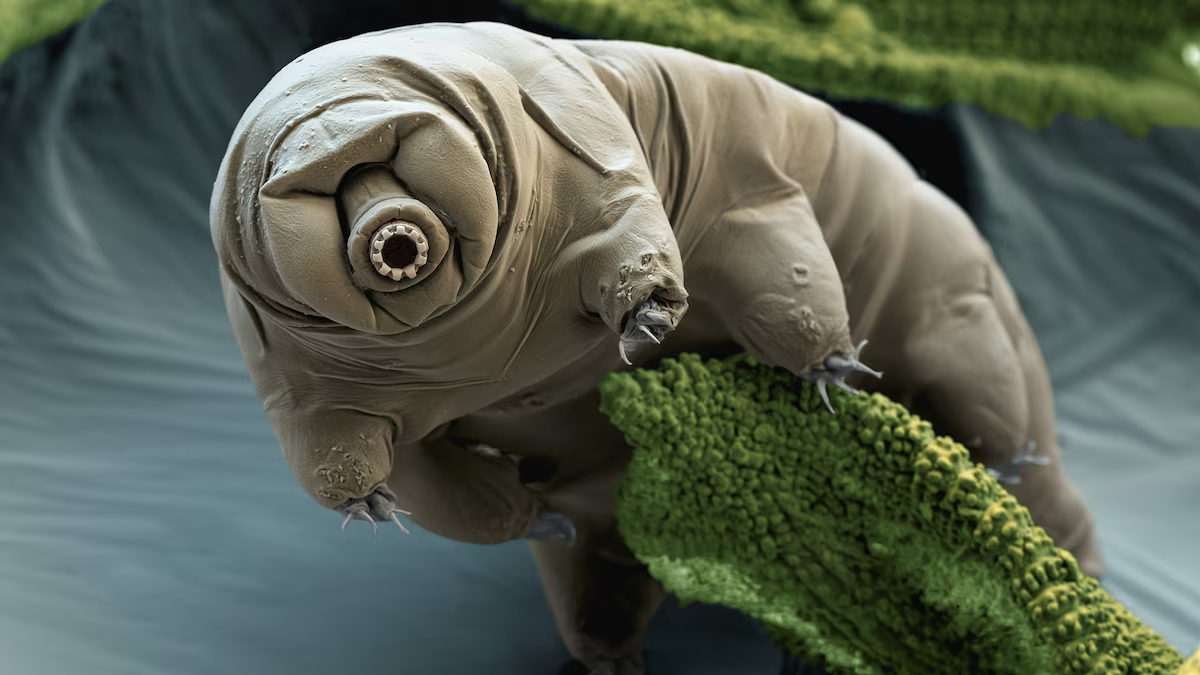Extraordinary Adaptations of the Water Bear
Tardigrades, often called water bears or moss piglets, are among the most resilient organisms known to science. Measuring less than a millimeter in length, they have captured the imagination of researchers due to their ability to survive conditions that would be instantly lethal to nearly every other form of life on Earth. Tardigrade survival in extreme conditions, such as desiccation, intense radiation, crushing pressures, and even the vacuum of space, showcases their incredible resilience in extreme environments.
One of their most fascinating strategies for tardigrade survival in extreme conditions is the tun state, where the tardigrade retracts its legs and head, slowing its metabolism to nearly zero. In this suspended animation, they can survive for decades until water reactivates their systems. The unique biochemistry that allows them to endure these extremes has inspired potential applications in medicine, biotechnology, and space exploration.
For readers seeking more on the biological classification of these animals, the Natural History Museum provides detailed information about invertebrates and microscopic organisms.
Survival at the Edge of Possibility
Tardigrades are famous for their ability to thrive in places where no other animals can live. They have been discovered in Antarctic glaciers, Himalayan mountain peaks, deep ocean trenches, and even volcanic hot springs. Scientists have subjected them to laboratory experiments. These tested their endurance under conditions such as near-absolute zero temperatures and searing heat well above boiling. Tardigrades have also survived radiation levels thousands of times higher than the lethal dose for humans. This suggests unique mechanisms of DNA protection, further enhancing tardigrade survival in extreme conditions. The discovery of proteins like Dsup, which shields DNA from damage, highlights how tardigrades maintain their cellular integrity under extreme stress. Beyond their scientific novelty, these adaptations may inspire innovations in preserving biological samples, medicines, and even human tissues. To explore more about DNA resilience and cellular biology, the Genome Research Limited resource provides accessible knowledge on genetics and molecular science.
Applications for Medicine and Space Exploration
The resilience of tardigrades is not just a scientific curiosity but a potential tool for advancing human technology. Researchers are investigating how tardigrade proteins might protect human cells from radiation during cancer treatments. This could potentially reduce side effects of radiotherapy. The same proteins could also be used to stabilize vaccines or essential medications without refrigeration. Such a breakthrough would transform healthcare access in developing countries and during natural disasters, demonstrating the practical applications of tardigrade survival in extreme conditions.
In the context of space travel, understanding how tardigrades survive extreme radiation and vacuum conditions could help design better methods. These methods would protect astronauts and preserve supplies on long missions to Mars and beyond. NASA and other agencies have expressed growing interest in these creatures as a biological model for survival in space. For additional insights on ongoing space research, the official NASA site provides updates on experiments with extremophiles.
Meanwhile, environmental scientists are also studying tardigrades to assess how resilient ecosystems might be under climate change. Their role in soil health and nutrient cycling, particularly through their interactions with nematodes, adds another layer of ecological importance. More resources on biodiversity and conservation can be found through the IUCN.



